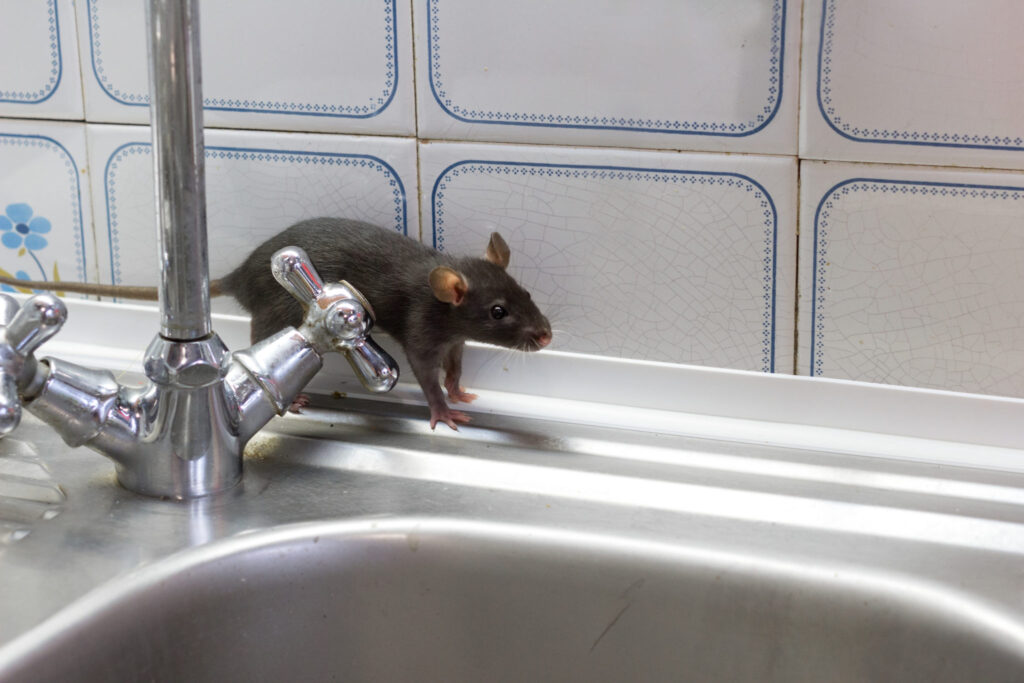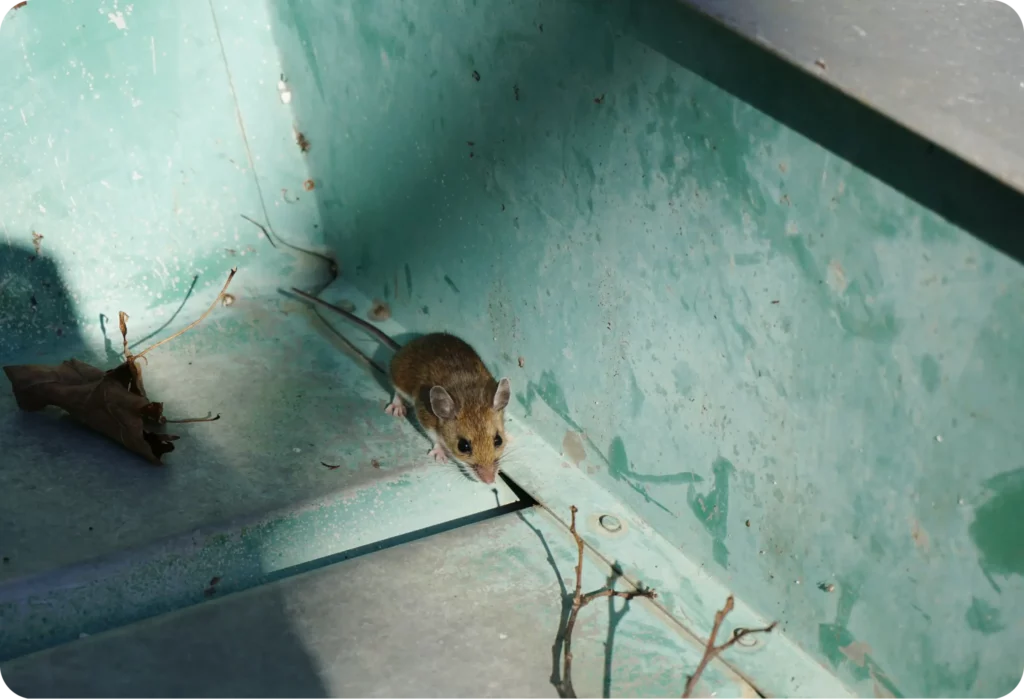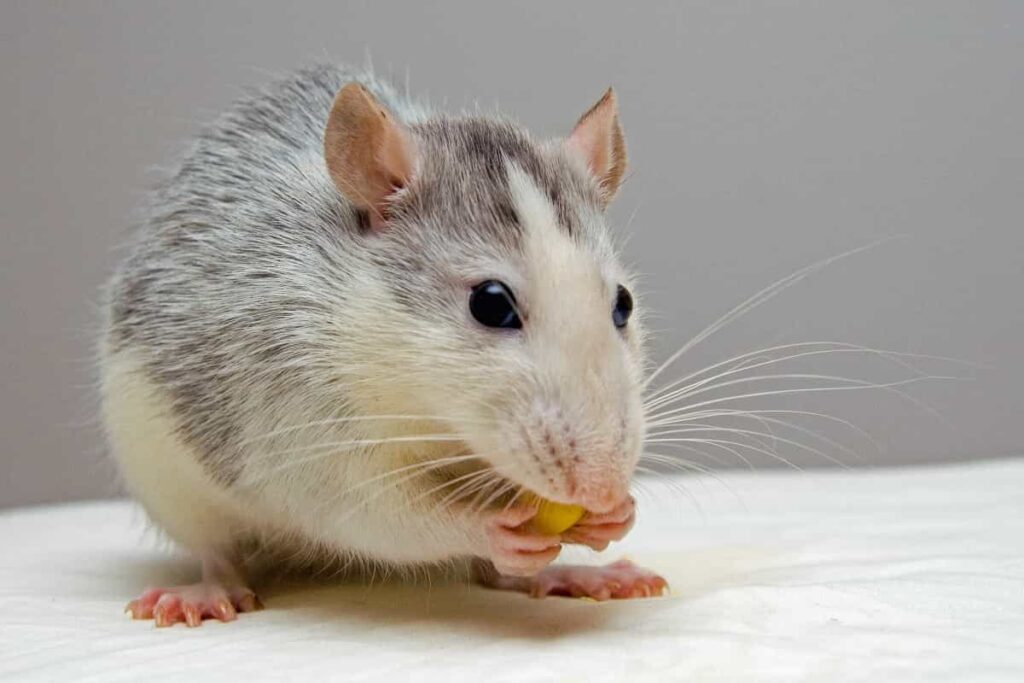Why is Rodent Removal Crucial for Property Protection in Sydney?
Rodent removal Sydney services have become essential for protecting properties from extensive and costly damage across the metropolitan area. Sydney’s urban environment creates ideal conditions for rodent populations to thrive, making property protection a critical concern for both residential and commercial property owners.
Rodents pose significant threats to properties through their destructive behaviours and rapid reproduction rates making rodent removal sydney necessary. These unwanted invaders can cause:
- Structural damage to wooden frameworks, insulation, and building materials
- Electrical hazards from chewing through wiring systems
- Health risks through contamination and disease transmission
- Financial losses from repair costs and property devaluation
The warm climate and dense urban landscape of Sydney provide rodents with abundant shelter and food sources, making infestations particularly challenging to control without professional intervention.
This article explores comprehensive strategies for protecting your property from costly damage caused by rodent infestations. You’ll discover identification techniques, damage assessment methods, professional removal processes, and preventive measures that safeguard your investment whilst maintaining a healthy living or working environment.
What Are the Common Types of Rodents That Infest Properties in Sydney?
Sydney properties face invasion from several rodent species, with rats and mice representing the most persistent threats to both residential and commercial buildings. The Norway rat (Rattus norvegicus) dominates urban environments, preferring ground-level areas such as basements, sewers, and foundations. These robust rodents measure 20-25cm in body length and exhibit aggressive territorial behaviour that drives them to establish extensive burrow networks beneath properties.
Roof rats (Rattus rattus) present equally concerning challenges, demonstrating exceptional climbing abilities that allow access to upper floors, roof spaces, and wall cavities. Their sleek build and superior agility make them particularly adept at exploiting structural weaknesses in buildings.
House mice (Mus musculus) complete Sydney’s primary rodent trio, with their small size enabling infiltration through gaps as narrow as 6mm. These prolific breeders establish colonies rapidly, with females producing up to 10 litters annually.
All three species exhibit nocturnal foraging patterns and possess continuously growing incisors that compel constant gnawing behaviour. Their adaptability to urban environments, combined with year-round breeding cycles in Sydney’s climate, creates persistent infestation pressures that threaten property integrity and occupant health across residential homes, office buildings, restaurants, and retail establishments.
How Do Rodents Damage Properties?
Rodents cause damage to properties primarily due to their natural instinct to gnaw and chew continuously. Their front teeth, known as incisors, grow throughout their lives, so they need to constantly wear them down by chewing on various objects. This instinctual behaviour leads them to target different materials within your property, resulting in significant damage over time.

Areas of Property Affected by Rodent Gnawing
The effects of gnawing damage can be observed in several parts of a property:
- Structural wood – door frames, beams, and flooring may deteriorate
- Furniture – upholstery, wooden legs, and fabric coverings can become targets
- Insulation materials – wall and roof insulation may get shredded for nesting purposes
- Stored items – cardboard boxes, paper documents, and clothing are at risk of destruction
The Threat of Electrical Wiring Damage
One of the most serious dangers posed by rodents in Sydney is their potential to damage electrical wiring. It is common for rodents to chew through electrical cables, exposing wires that create significant fire hazards. Such damage can lead to power outages, equipment failures, and even devastating house fires. Each year, Australian property owners incur thousands of dollars in insurance claims due to fires caused by rodents chewing on electrical wires. To mitigate this risk, it’s crucial to implement some strategies on how to protect electrical wires from rats.
The combination of weakened structures and compromised electrical systems makes rodent infestations a critical issue that requires immediate professional attention to protect properties effectively.
What Health Risks Do Rodents Pose to Occupants of Infested Properties?
The health risks that rodents pose to occupants of infested properties in Sydney go beyond just causing damage to buildings. Rodents are carriers of various diseases that can be transmitted to humans through direct contact, contaminated surfaces, and airborne particles.
Common diseases transmitted by rodents include:
- Salmonella – spread through contaminated food and surfaces
- Rat-bite fever – transmitted through bites or scratches
- Tapeworms – contracted via ingestion of contaminated materials
- Hantaviruses – inhaled through dust particles from droppings and urine
Infestations increase health risks because rodent droppings, urine, and saliva can contaminate living and working spaces. If you clean infested areas without proper protective equipment, especially in enclosed spaces where airborne particles can accumulate, you may be at a higher risk of exposure.
Early health warning signs include:
- Unexplained respiratory symptoms
- Gastrointestinal issues after being in infested areas
- Allergic reactions to dust and debris
- Persistent odours indicating contamination
Children, elderly individuals, and those with weakened immune systems are more vulnerable in properties with rodent infestations. It’s crucial to address rodent removal in Sydney promptly when health symptoms arise alongside signs of infestation to protect these at-risk groups.
How Can Early Signs of a Rodent Infestation Be Detected?
Detecting early signs of a rodent infestation in Sydney properties requires careful observation of specific indicators that reveal unwanted visitors. Here are some key signs to look out for:
1. Droppings Detection
One of the most obvious signs of a rodent infestation is the presence of droppings. These small, dark pellets are typically 3-6mm in size for mice and 12-18mm for rats. You can often find them concentrated near food sources, along walls, or in cupboards.
2. Gnaw Marks Identification
Another important sign to look for is gnaw marks on various surfaces throughout your property. Fresh gnaw marks appear light-coloured on wood, plastic, or cardboard, while older damage shows darker edges. Pay attention to areas such as:
- Furniture legs and corners
- Food packaging and containers
- Door frames and skirting boards
- Insulation materials in roof spaces
3. Unusual Noises
If you hear unusual sounds coming from within your walls or ceilings, it could indicate active rodent movement. Rodents are primarily nocturnal creatures, so these noises are likely to be more pronounced during the night. Listen out for scratching, scurrying, or squeaking sounds that become louder during quiet periods.
4. Electrical Symptoms
Be wary of any electrical issues that may arise in your property. Flickering lights, unexplained power outages, or tripped circuit breakers can all be warning signs that rodents have chewed through wiring systems. This not only disrupts the functioning of your electrical appliances but also poses a significant fire hazard requiring immediate professional attention.
Additional Resources
For more detailed information on identifying specific signs of rodent infestations such as how to identify mice and rats, it’s advisable to consult professional pest control resources or guides.
What Does an Effective Rodent Removal Process Involve in Sydney?
The rodent removal process Sydney professionals follow begins with comprehensive property assessments. Licensed technicians conduct detailed inspections of your premises, examining potential entry points, nesting sites, and areas showing signs of activity. These pest control inspection procedures include checking roof spaces, wall cavities, basements, and storage areas where rodents typically establish colonies.
Following the initial assessment, pest control experts develop customised treatment plans tailored to your specific infestation severity. You receive a detailed strategy that addresses the unique challenges of your property, whether you’re dealing with a minor mouse problem or extensive rat colonies throughout multiple areas.
The implementation phase involves targeted removal techniques designed for maximum effectiveness:
- Tamper-proof baiting stations strategically placed in high-activity zones
- Snap traps positioned along established rodent pathways
- Exclusion methods to seal identified entry points
- Monitoring systems to track treatment progress
Professional services ensure all methods comply with Australian safety standards whilst protecting children and pets. The systematic approach guarantees thorough elimination of existing populations whilst preventing future infestations through strategic barrier installation.
Why Are Professional Pest Control Services Essential for Managing Rodents in Sydney?
Licensed pest controllers bring specialised expertise that distinguishes them from DIY approaches. These professionals possess comprehensive knowledge of rodent behaviour patterns, breeding cycles, and the most effective treatment methods for Sydney’s unique climate and urban environment. Their training enables them to identify species-specific risks and implement targeted solutions that address root causes rather than merely treating symptoms.
Professional pest control Sydney services provide access to eco-friendly and child/pet-safe options that many property owners cannot source independently. These treatments utilise advanced formulations that eliminate rodents whilst maintaining safety standards for families and businesses. Licensed professionals understand which products work best in different environments, from residential kitchens to commercial food preparation areas.
The flexible and client-specific service packages offered by professional services adapt to varying property sizes, infestation severity levels, and budget constraints. You receive customised treatment plans that consider your specific circumstances, whether you manage a small apartment or oversee multiple commercial properties. This personalised approach ensures optimal results whilst maximising cost-effectiveness.
Licensed professionals also provide warranties and follow-up services that guarantee treatment success, protecting your investment in Rodent Removal Sydney: Protecting Properties from Costly Damage initiatives through ongoing support and monitoring.
How Can Preventive Measures Help Avoid Future Rodent Infestations?
Rodent prevention Sydney strategies focus on three critical areas that significantly reduce the likelihood of future infestations. Sealing entry points rodents commonly use represents the most effective first line of defence against unwanted intrusions.
Strategic Entry Point Management
Sealing potential entry points requires systematic identification of vulnerable areas around your property. You should inspect and seal:
- Gaps around pipes and utilities – Use steel wool combined with caulk for permanent barriers
- Cracks in foundations and walls – Apply weatherproof sealants to prevent access
- Roof line openings – Install mesh screens over vents and repair damaged roof tiles
- Door and window frames – Replace worn weatherstripping and repair damaged screens
Cleanliness and Environmental Controls
Maintaining cleanliness eliminates the food sources and shelter opportunities that attract rodents. You need to focus on removing food waste promptly, storing items in sealed containers, and decluttering storage areas where rodents might nest.
Proactive Inspection Scheduling
Regular professional inspections enable early detection before minor issues escalate into major infestations. These scheduled assessments identify new vulnerabilities and verify the effectiveness of existing preventive measures, ensuring your property remains protected year-round.
When Should Electrical Systems Be Assessed After a Rodent Infestation in Sydney?
Electrical safety concerns after a rodent infestation in Sydney require immediate action once you’ve resolved a rodent issue on your property. Damaged wiring poses significant fire risks that can ignite within walls, ceilings, or electrical panels without any warning. When rodents gnaw through insulation and copper wiring, you may experience potential power outages, electrical shorts, and complete system failures.
Importance of Timely Wiring Damage Inspection
Wiring damage inspection should take place within 48 hours of completing rodent removal treatments. It’s crucial to have licensed electricians inspect all accessible electrical components, such as:
- Circuit breakers and fuse boxes: Look for any signs of rodent entry
- Wall outlets and switches: Check for burn marks or unusual odours
- Ceiling fixtures: Investigate any flickering or intermittent power issues
- Appliance connections: Identify any recent malfunctions
The Need for Collaboration Between Pest Control Professionals and Electricians
Both pest control professionals and qualified electricians must work together during post-infestation assessments. Pest control experts can identify any remaining rodent activity while electricians evaluate structural damage to your electrical infrastructure. This collaborative approach ensures thorough safety checks that safeguard your property investment and the wellbeing of its occupants.

The Risks of Delaying Electrical Assessments
Delaying electrical assessments significantly increases your risk exposure, especially in older residential and commercial buildings in Sydney where outdated wiring systems are more susceptible to rodent damage.
How Does Timely Rodent Removal Contribute to Property Value Protection and Occupant Safety in Sydney?
Timely rodent removal benefits Sydney property owners through multiple protective layers that safeguard both financial investments and human wellbeing. When you address infestations promptly, you prevent minor structural issues from escalating into major renovation projects that can cost thousands of pounds.
Protecting Property Value
Property value protection becomes paramount when considering the cumulative damage rodents inflict over time. You’ll find that early intervention stops:
- Extensive timber framework deterioration
- Insulation replacement requirements
- Foundation undermining from burrowing activities
- Contamination of storage areas and living spaces
Ensuring Occupant Safety
The health dimension cannot be overlooked. Swift action creates safer environments by eliminating disease vectors before they establish breeding colonies. You reduce exposure risks to salmonella, hantavirus, and other rodent-borne pathogens that threaten occupant wellbeing.
Electrical system integrity remains protected through prompt intervention. You maintain uninterrupted power supply and eliminate fire hazards by addressing wire damage before it compromises your property’s safety systems. Rodent Removal Sydney: Protecting Properties from Costly Damage requires immediate professional attention to preserve both structural integrity and occupant safety across residential and commercial properties.
Related : Rat Removal Sydney: How Professionals Eliminate Infestations
FAQ’s on Rodent Removal in Sydney
Rodent removal is essential in Sydney due to the city’s ideal urban environment for rodent populations. Rodents cause extensive property damage by gnawing on structures, electrical wiring, and insulation, leading to costly repairs, fire hazards, and health risks. Addressing infestations quickly protects property value, occupant health, and safety.
The most common rodent species in Sydney are:
Norway rats: Typically found at ground level, such as basements and foundations.
Roof rats: Skilled climbers that access upper floors, roof spaces, and wall cavities.
House mice: Small and highly adaptable, capable of entering through gaps as small as 6mm.
These rodents pose serious threats to residential and commercial properties.
Rodents cause damage by continuously gnawing to manage their growing teeth. Common areas affected include:
Structural wood: Door frames, beams, and flooring.
Electrical wiring: Rodents chew on wires, creating fire hazards.
Insulation materials: Used for nesting, leading to property degradation.
Stored items: Cardboard, paper, and fabric are often destroyed.
Rodent damage weakens structures, increases fire risks, and leads to expensive repairs.
Rodents are carriers of various diseases, such as:
Salmonella: Contaminates food and surfaces.
Rat-bite fever: Transmitted through bites or scratches.
Hantaviruses: Spread via airborne particles from droppings and urine.
Tapeworms: Contracted through contaminated materials.
Infestations pose significant health risks, especially to vulnerable groups like children and the elderly.
Look for these key signs of a rodent infestation:
Droppings: Dark, small pellets near food sources and along walls.
Gnaw marks: On furniture, food packaging, or insulation.
Unusual noises: Scratching, scurrying, or squeaking at night.
Electrical issues: Flickering lights or power outages may indicate rodent damage to wiring.
Early detection allows for prompt action to mitigate further damage.
Professional rodent removal includes:
Comprehensive property inspection to identify entry points and nesting sites.
Customized treatment plan tailored to the infestation’s severity.
Targeted removal techniques: Using baiting stations, snap traps, and exclusion methods.
Ongoing monitoring to ensure the infestation is fully eradicated and to prevent future invasions.
This thorough process ensures both immediate elimination and long-term prevention.
Licensed professionals bring expertise in rodent behavior, effective treatment methods, and the unique challenges posed by Sydney’s climate. They use eco-friendly, child- and pet-safe treatments and can tailor their approach to specific properties. Additionally, they offer warranties and follow-up services for continued protection.
Key preventive strategies include:
Sealing entry points: Use steel wool and caulk to block gaps around pipes, cracks, and roofline openings.
Maintaining cleanliness: Remove food waste, store food in sealed containers, and declutter storage areas.
Regular professional inspections: Scheduled assessments help detect early signs of new infestations and verify the effectiveness of existing measures.
These actions reduce the likelihood of future rodent problems.
Electrical systems should be inspected within 48 hours after rodent removal to ensure safety. Rodents chewing on wires can cause short circuits, power outages, or even fires. A licensed electrician should assess circuit breakers, outlets, ceiling fixtures, and appliance connections for any signs of damage.
Timely rodent removal prevents extensive structural damage, including wood deterioration, insulation replacement, and foundation weakening. It also protects occupants from health risks like salmonella and hantavirus. Additionally, addressing wiring damage reduces fire hazards, maintaining the integrity of electrical systems and preventing costly repairs, thus protecting both property value and occupant safety.

